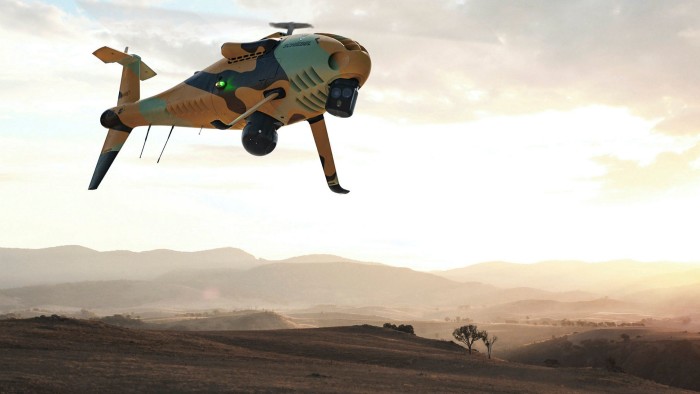Austria’s ‘hidden champions’ power economy

Roula Khalaf, Editor of the FT, selects her favourite stories in this weekly newsletter.
The building at 112 Margaretenstrasse in south-west Vienna is handsome, though otherwise unremarkable — like thousands of others in the Austrian capital. It is home to a company called Schiebel, founded in 1951 and, then, an equally unremarkable manufacturer of small electronic components for household appliances.
Seventy years later, Schiebel is one of the world’s leading manufacturers of unmanned aerial vehicles (UAV’s) with the Camcopter, its own design of remote-control helicopter, according to Neil Hunter, its global head of business development.
The Camcopter S-100 is the only vertical take off and landing (VTOL) unmanned air system of its class. It is used for military and civilian purposes by 35 customers around the world, with 400 sold and several hundred thousand flight hours under its belt. All sales so far have been exports, including to the French, Royal Australian and Royal Thai navies. Schiebel invests 20 per cent of revenues into research and development, says Hunter.
Yet, in spite of Schiebel’s global success, few people outside the security sector have heard of the company or its products. That includes most Austrians, says Professor Georg Jungwirth, of the Campus 02 University of Applied Sciences in Graz.
In 2007, he started a database of what he calls “Austria’s Hidden Champions” to better understand this successful business segment, which plays a central role in the economy.
Jungwirth has now identified 199 companies that meet his ‘Champions’ criteria: they must be headquartered in Austria; be at least the number one, two or three in their industry globally, or the number one in Europe; and have annual revenues that do not exceed €300m.
He calculates that these Hidden Champions employ 2.4 per cent of the Austrian workforce and generate some €17bn in revenues, or 4.4 per cent of GDP, annually. Their products make up about 10 per cent of Austria’s exports.
Their level of innovation — Jungwirth says Hidden Champions on average hold 34 valid patents — is attributed to Austria’s education system, support from government agencies and chambers of commerce, and a relatively stable legal and political climate.
To some, they are also imbued with a quiet but deeply patriotic nature. “Even if the country were to become more uncertain or justice less predictable, I would expect few . . . would move away,” says Christoph Lindinger, a partner at Schoenherr, a Vienna-based law firm.
About three in four of these companies produce industrial goods, though the spectrum is wide. Thomastik-Infeld in Vienna is a world-famous producer of musical instrument strings which celebrated its centenary two years ago. Wollsdorf Leder, whose headquarters are 20km north-east of Graz, produces leather coverings for seats in the auto and aviation industries. It lists BMW, Opel and Austrian Airlines among customers, and claims 14 cars equipped with its products are sold every minute worldwide.
But the Hidden Champions are not limited to big cities. Bachmann Electronic produces high-tech control equipment for electrical systems up to and including high-voltage grids. It is headquartered in Feldkirch, a small town near the border with Lichtenstein in Voralberg, in Austria’s far west.
Jungwirth says Hidden Champions typically share some characteristics. They have a high ratio of exports (the average is 85 per cent) because domestic demand is small and sometimes non-existent.
“Since about 75 per cent operate in B2B markets, many avoid advertising and PR in mass media,” he says. “They focus on B2B media within their respective industries.”
Because they are leaders in both quality and technology in their markets, they often realise high margins and profits, and intentionally avoid the spotlight for protection. “They don’t want to draw attention to their niches, or their [economic] success,” says Jungwirth. “That is why they often operate like hidden actors.”
This encourages them to remain family-run, avoiding stock exchange listings and the need to publish results. It also enables them to invest as required to remain competitive, while managing downturns carefully — typically avoiding redundancies, which in turn promotes staff loyalty.
Will their tradition of succession continue in the digital age, given the array of alternative career choices on offer in the 21st century? Hannes Hecher, chief executive at Schiebel, believes it will, because successor owners can adapt and change their family companies as they see fit.
“With more options, there are more possibilities for successors of family-owned businesses [to redirect the company],” he says. “At Schiebel, for example, nobody dreamt of UAVs when the company was founded. Now, we are the world’s market leader [and] still family-owned. [We did that by] identifying what the market needs and using that potential.”
Comments